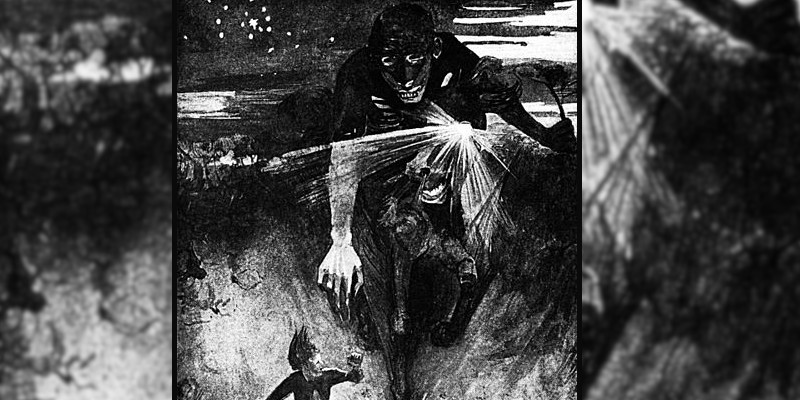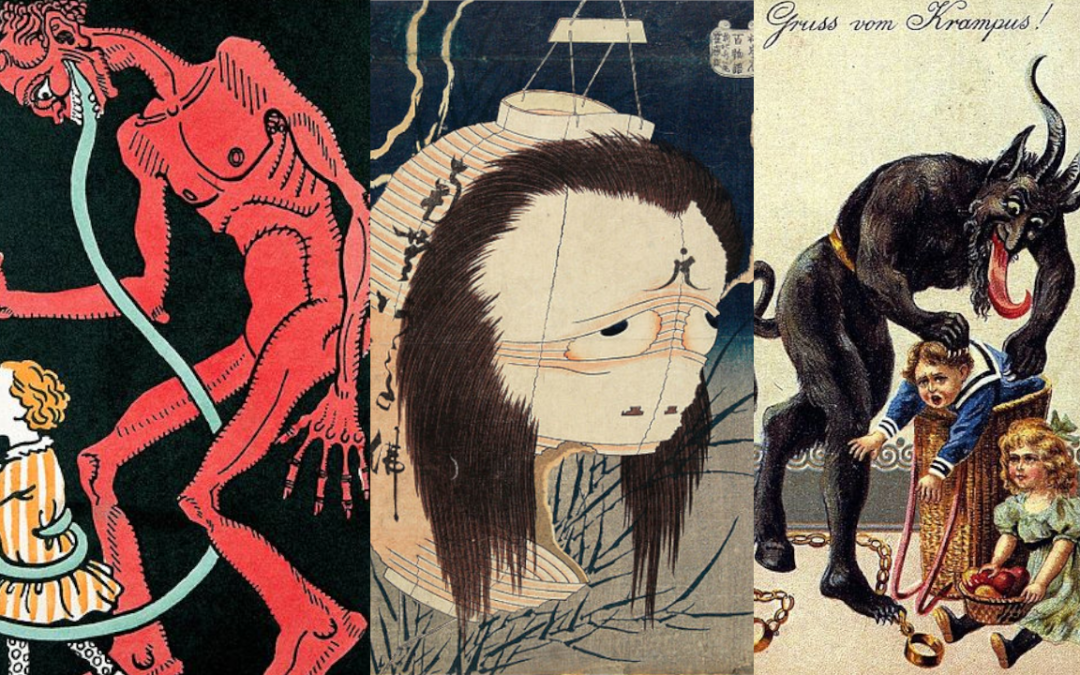Winter is terrible – it’s always cold – bearded men break into people’s homes – and if folklore is to be believed, all kinds of strange and terrible creatures begin to emerge. So to reflect this, here are 5 of the most interesting mythical creatures of winter.
Mahaha
One of the most bizarre mythical creatures of winter is the Mahaha. Like a mummified corpse, their skin is blue, and thin, barely being able to contain their internal organs. Sometimes their bones actually pierce through, poking out in different directions. Long thin hair falls from it’s head like Spanish moss, and it’s eyes glow bright white. Yet despite it’s fearsome appearance, Mahaha kill people in a very unserious way… it tickles you. Legend tells it literally tickles you to death. The threat of this is more scary when you take a closer look at their fingers. Long and thin, the bones are razor sharp at the tips. Strangely, the corpses of their victims are always found with a large grin across their face.
The good news is they are relatively slow moving, perhaps because they are so emaciated. They are also stupid and easily tricked. Apparently the best way to escape one is to push it into a fast moving river. But their skin is ice cold, and touching it can cause frostbite. According to Inuit legend, they roam remote areas of the Canadian wilderness, and as the snow spreads out in the winter, so do they. Some believe they were once human, but somehow, over a long period of time, were distorted by the harsh winter conditions. Usually you will hear a Mahaha as it approaches. They have a permanent grin, laughing loudly at erratic intervals. So if you find yourself in the winter wilderness, and you hear a loud cackle, run.
Nuckelavee

Mahaha are not the only monster said to fear running water. Scottish folklore has long described a monstrous creature known as the Nuckelavee. A gigantic skinless being, it is part horse and part humanoid – as if Satan himself cross bred them. It’s head is ten times the size of a mans, and it’s arms freekishly long. It’s eyes glow red, and it’s head sways as if it’s neck is barely able to keep it up. As it approaches, black blood can be seen flowing through it’s veins like oil.
It seems to be a mix of Celtic and Norse legend, most likely merged when Vikings colonized northern Scotland. According to tradition, it is the worst of all monsters in Scottish folklore – and it’s presence alone can spread disease. But powerful as it is, the Nuckelavee is scared of fresh water – and so, the only way to escape one is to cross a body of fresh water. You’ll also be glad to hear the Nuckelavee only emerges in winter – because apparently you don’t get cold if you have no skin.
Snow Wasset
Much less scary is the Snow Wasset. A huge legless weasel, it is generally not a threat to humans, but is best avoided. During the summer months it grows legs and lives in forested areas. But by winter it id transformed, looking more like a furry seal than a fox. The Snow Wasset is crafty, burrowing under snow and waiting for potential prey to pass above. Then without warning it pounces, clamping down with it’s alligator like teeth and dragging victims below.
As the winter goes on, the Snow Wasset grows, and there are some who blame missing children on the legend. But even if it does snag children, I just can’t be scared of a big weasel. It’s also one of the only mythical creatures I could beat to death, so that’s worth remembering.
Belsnickel
Before we move away from the less scary mythical creatures of winter, let’s briefly touch on an odd Christmas legend. German folklore tells of a ominous figure known as Belsnickel. Like Father Christmas’ evil twin, he is much more menacing. Covered in soot and dressed in ragged torn fur, he seems to enjoy scaring young children. In the lead up to Christmas he is said to roam the snowy regions of southern Germany, visiting children to decide if they have been well behaved. Everywhere he goes, so does his stitch, which he uses to beat any naughty child he encounters.
There are even stories of him kidnapping children, and beating them almost to death. But not even good children are safe. Sometimes he will ask a child to recite specific bible passages. Then as a final test he throws cake and sweets on the ground – and if a child is too eager to pick them up, they are beaten for being greedy. It might seem harsh to scare children with tales of the Belsnickel – but remember we are talking about German children, they don’t scare easily.
Yuki-onna

Japanese folklore describes what is perhaps the worst winter monster of all. It is known by many different names – Snow daughter, Snow girl, Snow Hag, Snowfall Witch – either way she is associated strongly with snow. The most common name for her is Yuki-onna, meaning Snow Woman. During snowstorms, she emerges like a ghost, terrorizing those who get lost in them. A tall woman with long hair, She is more pale than any living human, and has blue lips. Most often, she is said to be beautiful, to the point she mesmerizes any man she encounters.
Then like a vampire, she drains their energy, leaving them older and weaker. If especially hungry, she will leave them dead, and when the snowstorm passes, their body will be frozen solid. Some have escaped harm by throwing hot water at her – but most have no chance to do so. She doesn’t walk like a human, tending to float like snow in the air.
One legend tells that she was once a normal human, who after being abandoned by the man she loved, fled on foot into a deadly blizzard. Lost within the white mass of snow, she became the Yuki-onna. Ever since, the snow woman has avenged herself on any man she meets with.

